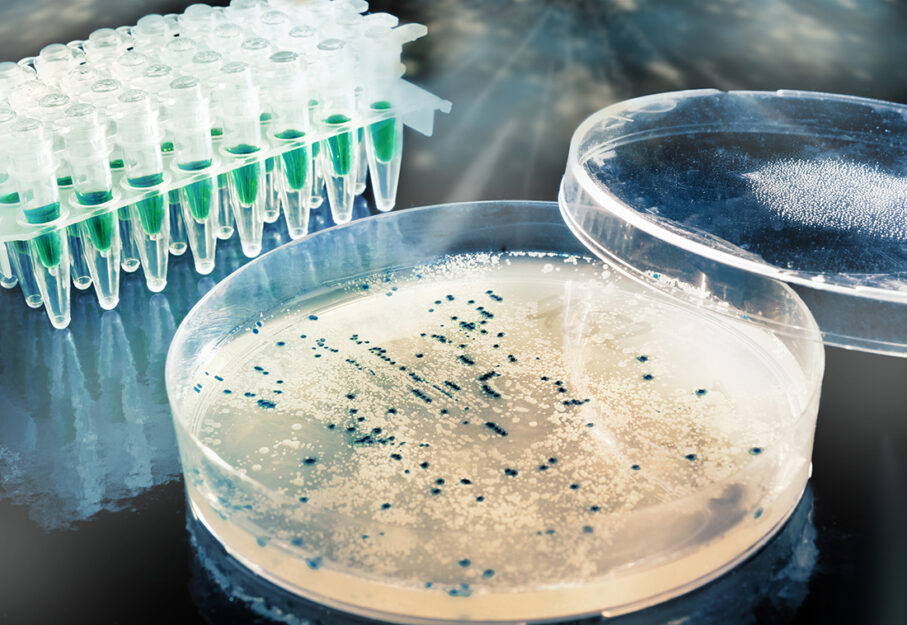- Rae Lynn Mitchell
- Public Health, Research, Show on VR homepage
Mutation math: Exploring numerical methods for studying antibiotic resistance
A new computational tool for investigating bacterial mutation rates when exposed to an antibiotic may hold the key to better addressing drug-resistant bacterial infections

Bacterial colony picking for DNA cloning
The introduction of antibiotics in the 20th century was something of a medical miracle. But widespread use of these lifesaving drugs is contributing to the rise of antibiotic-resistant bacteria, a growing 21st century public health problem. Researchers have been investigating how exposure to antibiotics can lead to drug-resistant bacteria for years; however, quantitative studies of this problem have been impeded by a lack of appropriate analytical tools for investigating bacterial mutation rates when bacteria are exposed to an antibiotic. The impact on public health of exposing bacteria to nonlethal levels of antibiotics is an important research topic because nonlethal levels of antibiotics are often found in sewage water, rivers, lakes and livestock. Most existing computational methods for estimating microbial mutation rates are not appropriate under such conditions.
A new study in the journal Bulletin of Mathematical Biology addresses this gap by proposing a new computational method for estimating mutation rates in bacteria exposed to nonlethal levels of antibiotics. In this paper, Qi Zheng, PhD, professor in the Department of Epidemiology and Biostatistics at the Texas A&M University School of Public Health, critically examines existing computational methods, develops a new algorithm for estimating mutation rates in bacteria exposed to nonlethal antibiotic doses, and describes possible future directions for analytical tools in this area.
Research into bacterial mutation rates began in the 1940s and continues to the present. However, classic estimation methods do not consider cell death, which is recently recognized as an important drawback of existing estimation methods when bacteria are exposed to nonlethal doses of antibiotics. Zheng’s new computational method was motivated by an urgent research problem in clinical medicine—how to experimentally determine rates of microbial mutation when the mutation inducer is the same as the selective agent. An example of this kind of investigation is how fast bacteria develop resistance to rifampin when they are treated with various nonlethal doses of this common tuberculosis drug. This type of experimental research is so far surprisingly rare, and a contributing factor to this unsatisfactory situation is that researchers lacked reliable computational tools to determine microbial mutation rates in such a scenario. Zheng’s new algorithm was devised to ameliorate this undesirable situation. Extensive simulation studies by Zheng demonstrated that his new algorithm takes into consideration cell death effectively, leading to improved estimation of microbial mutation rates.
By offering an improved computational tool, Zheng encourages researchers to expand research into how antibiotics at nonlethal concentrations affect bacteria’s ability to develop resistance against antibiotics.
“Concerted efforts in that direction will allow researchers to better understand how bacteria develop antibiotic resistance under various conditions, which would help yield answers to what is becoming one of the greatest public health problems of the 21st century,” Zheng said.
Media contact: media@tamu.edu


